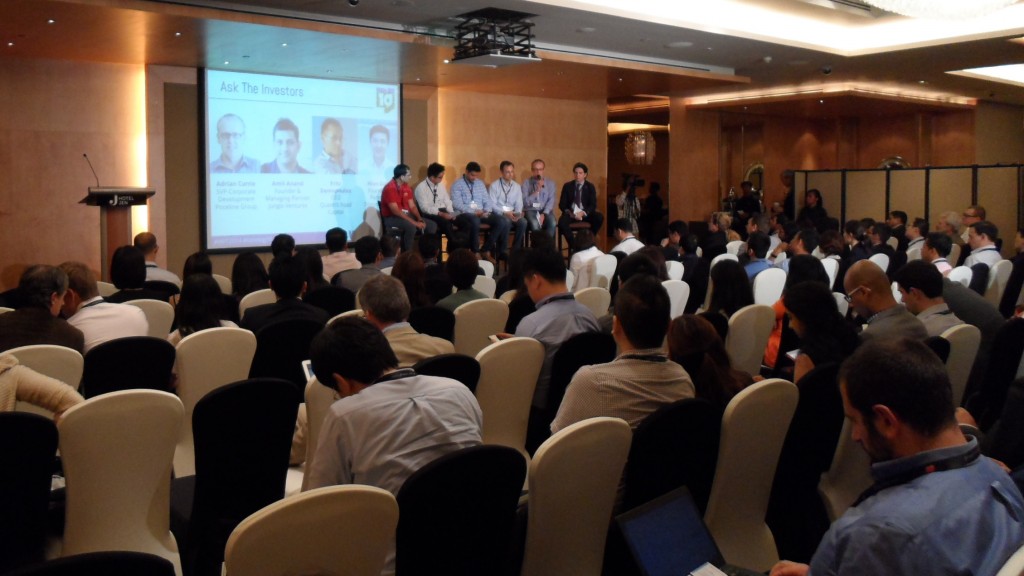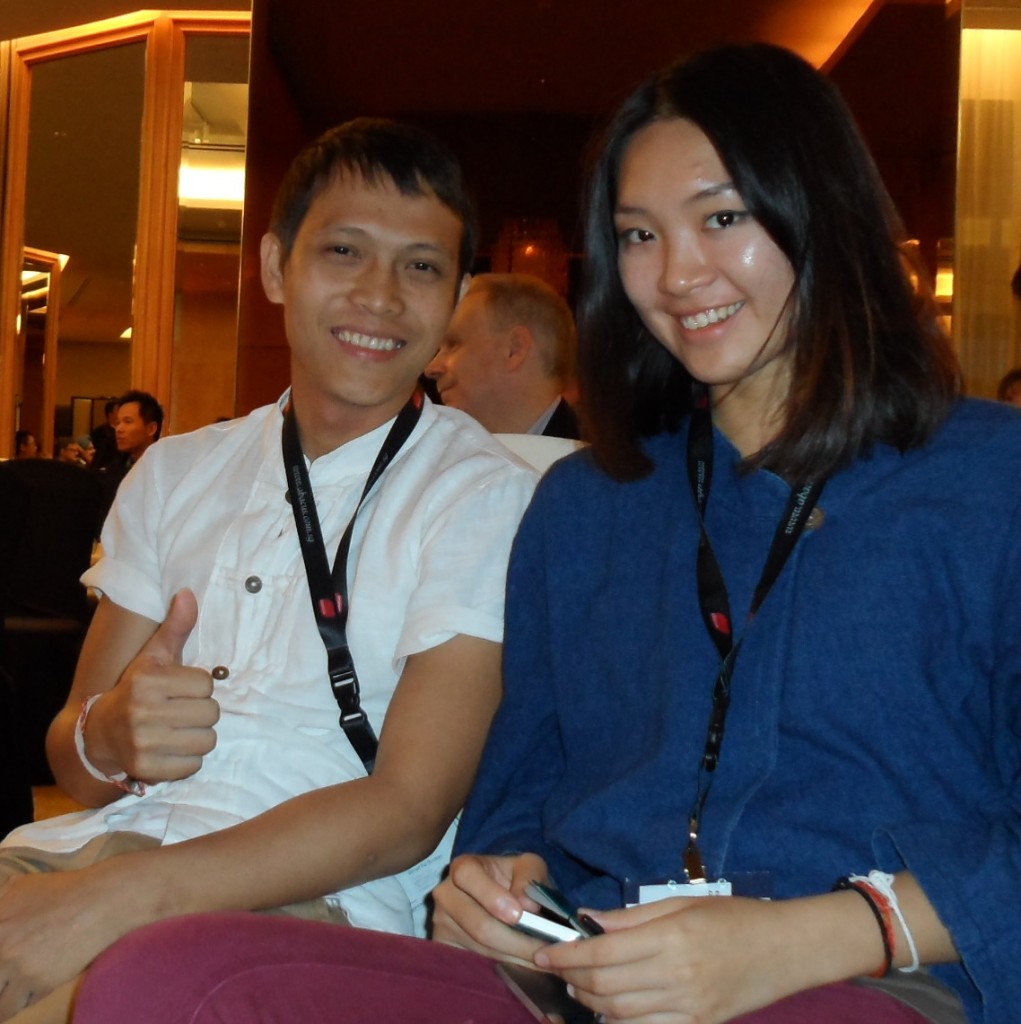
11 Nov, 2014
How TravelRave and ITB Asia are dumbing down the travel industry
Singapore : When Ms Neeta Lachmandas-Sakellariou, Assistant Chief Executive of the Singapore Tourism Board, addressed the opening press conference of ITB Asia on Oct 29, she dwelt extensively on the opportunities of a booming Asia-Pacific tourism industry, as well as the challenges. She made no mention of any threats. Not that she, a well-trained Singapore government executive, and Messe Berlin, the German organisers of ITB Asia, are unaware of the looming threats. However, as is the case in travel industry events in Asia and beyond, they are swept under the carpet. Whether such dumbing-down serves the best interests of the industry at large, especially its rank-and-file workers, is worth pondering.
Launched in 2008, the ITB Asia is the centerpiece of a week-long calendar of industry events known as TravelRave. While buyers and sellers horse-trade on the floors of the trade show, a number of events are held alongside for technology pundits, hoteliers, airline executives, tour operators and MICE organisers. The TravelRave-ITB Asia combo has capitalised on Asia’s travel boom and the decline of the region’s former peak events, the PATA Annual Conference and Travel Mart, to become the undisputed leader of the pack.
This year’s shindig was dominated by the impact of technology and its accelerating disruption of the decades-old distribution channels. The Ivy League event is Web in Travel, the equivalent of a Toys-R-Us convention where Google-eyed 20- and 30-somethings brandish their new gizmos and gadgets, and raise money to convert them into business propositions. More or less the same tech focus prevails at the Asian Aviation Summit and the Hotel Management Conference, both of which are almost entirely sponsored by tech companies. Presentation after presentation takes a wildly optimistic view, making no mention of potential threats. Even at the Asian Travel Industry Leaders Summit, said Ms Lachmandas, everyone is enthused by the enormous potential of booming Asia. The key challenge, the industry leaders feel, will be human resources – finding people to deliver on the travel industry promise.
 A Web in Travel panel discussion in session. |
If the industry “leaders” only see human resources as their topmost challenge, they are in denial about life outside their comfort zones. As clearly cited by the World Economic Forum Global Outlook for 2015, released this week in Dubai, the growing lists of “threats” is outstripping the list of “challenges”. Just as farms can only be productive when cleared of weeds and vermin and if weather conditions and rainfall permit, the travel industry needs an equally good operating environment.
That operating environment is becoming increasingly unpredictable. Asia’s economic growth is creating a new set of both challenges and threats, e.g.,: geopolitical power struggles; rising social and ethnic tensions; environmental degradation, including that caused by the tourist hordes; a rich-poor income gap; corruption; and more. Governments are struggling to curb tax evasion; manage an ageing society; enforce laws; ensure security and enhance public well-being. Multinational companies and governments both are facing a global trust deficit. Illegal surveillance and violation of privacy are becoming the norm. The rising middle-class is becoming increasingly cognizant of its rights.
None of these threats-cum-challenges were on the TravelRave agenda. Such obvious blind spots makes the industry less prepared to deal with them. Why are they ignored? Too controversial? Likely to upset the sponsors? A desire to play it safe? Nothing to do with us? Someone else’s responsibility? Whatever, delegates walk away without a comprehensive, realistic appraisal of ALL operating-environment factors that could impact them, their businesses, families and communities. It also smacks of gross leadership irresponsibility. Leaders are supposed to defend everyone’s interests, especially those at the bottom of the ladder. Although the tourism industry brags about its job-creation potential, that claim rings hollow if leaders sweep problems that cost jobs under the carpet.
A classic case in point is the rise and stall of Thailand, the Asia-Pacific travel & tourism story of the year. Thailand’s predicament is a purely man-made, self-inflicted disaster caused entirely by national leaders, both elected and unelected. A show which brands itself as ITB “Asia” would have been a good place to discuss it. No chance. Similarly, this is the 10th anniversary of the devastating tsunami that struck many Asia-Pacific countries. Another good opportunity to explore how destinations recovered and the many lessons learnt from the rebuilding process. Again, not on the radar screen. Instead, the conference programme featured a session on lesbian and gay travel. Same-sex relations are illegal in Singapore and still culturally taboo in many parts of Asia. Promoting it at ITB Berlin may be okay, but doing so at ITB Asia was somewhat off-centre.
There were also examples of how former rosy forecasts of yore get proved wrong. The aviation summit was dominated by discussion of the battle between low-cost carriers (LCCs) vs full-service airlines (FSAs). Ten years ago, such aviation summits were full of rah-rah optimism about how LCCs were to the aviation industry what the discovery of penicillin was to the world of medicine. Sure, now everyone can fly, but success has bred a new set of problems. Competition is bordering on the chaotic. Their own lean-and-mean business models are under siege, and the FSAs are fighting back. A shakeout is looming. As for the climate-change impact of all the new aircraft, not a word.
Proving to be a blessing-cum-curse, technology is making all the issues cyclical and inter-related. The internet onslaught has all but disintermediated the travel agents and is disintegrating the travel distribution system. Online travel agencies are the new kings of the road. Airlines and hotels are both facing the heat. With just about everyone carrying a smartphone, there is no shortage of ideas on how to make them conduits for commerce. Yet, for every idea that works, several others fade quietly away. The “techies” discover that without trustworthy employees and deep-pocket, long-term thinking investors, the life-span of their “idea” is perhaps a year at most. In spite of that, there appears to be plenty of money available to fund them.
This “disruption” is just beginning, and will worsen as competition grows from unexpected sources. As the NATAS seminar on corporate travel heard, anyone with a database, even the oil and gas industry which supplies fuel to the travel and transport industry, can now get into the travel business. A fight for survival is raging in the face of staff fluidity, changing customer demographics and demanding investors/shareholders, all exacerbated by a ceaseless flow of external shocks.
In spite of this turbulence, the dumbed-down travel & tourism industry seems unwilling to take a balanced approach in preparing its constituents for the threats lurking behind every opportunity. That’s like taking high-dosage medication without probing the side effects. At the hotel summit, one of the sponsors, Cisco Systems, briefed delegates about new technologies that can monitor a guest’s every movement, and dispatch targeted messages with specific offers. Such “location analytics” can also be implemented in airports and shopping malls. The marketing pitch says this will help “enhance the customer experience.” It also sounds like a gross intrusion of privacy, especially as there is total opacity about who is accessing this data behind the scenes.
Similarly at the NATAS summit, which focussed on the role of technology in corporate travel, Ms Suyin Lee, Managing Director Singapore, FCm Travel Solutions, outlined a long list of threats-cum-challenges set to upset business travel processes – from visas to safety/security, integrating technology to maintaining databases, outsourcing to finding trusted technology partners. The combination will not only make it almost impossible for new entrants, but also threaten the survival of existing players.
The words I heard most often during the five-day event were “How do you…?” as in “How do you” deal with this or that problem, both existing and emerging. Clearly, there are more questions than answers, more threats than challenges, more disruption than stability. While TravelRave and ITB Asia are primarily intended as platforms for doing business, the content imbalance is stark. Critical doing-business issues, both external and internal, are not given the comprehensive, holistic treatment the delegates deserve to get. Making matters worse, some of the events were closed to the media, such as the Travel Leaders Summit and the Singapore Convention and Exhibition Bureau session.
The dumbing-down also has a ripple-effect. When industry leaders and the events they attend sweep the threats-cum-challenges under the carpet, they squander a major opportunity to have them discussed and debated downstream at regional and local events. This means alternative perspectives don’t get a healthy bottom-up hearing, and the so-called solutions are only top-down. Travel industry leaders are often heard propagating the wisdom of listening to the customers in order to improve service delivery. If they did the same for alternative perspectives, they may be able to strengthen the foundations of the industry and help it contribute towards solving some of the wider global problems.
Even the “techies” recognise this. At the Web in Travel event, new start-ups are invited to make brief presentations, and participants vote on which ones they like best. One prize goes to the “investor’s choice” and the other to the “people’s choice.” This year, the investor’s choice went to JayRide, which offers airport taxi-booking services to help avoid queues. But the people’s choice went to LocalAlike, started by two young Thais to provide alternative tours that will put more of the earnings from tourism into the hands of local community villages.
 Mr. Somsak Boonkam and Ms Suratchana Pakavaleetorn, winners of the Web in Travel “People’s Choice” for their social enterprise tourism website www.localalike.com |
The two entrepreneurs, Ms Suratchana Pakavaleetorn and Mr. Somsak Boonkam, refer to their venture as “a Thai-based social enterprise focused in creating solutions for local villages….We curate unique experiences across Thailand while making sure that 70% of what you pay goes back into your host communities. We love Thailand dearly and our promise is to transform how everyone travel in our country.”
See the difference in perspective? The “investors” opted for cash-flow. The “people” chose a social enterprise which, by the way, is a potential threat to tour operators. Another “disruption” in the offing.
TravelRave-ITB Asia now need some competition. As ITB Asia is now the region’s top dog, exhibitors get hit with steady increases in booth space costs every year. Many still find it good value. However, demand from sellers seeking to tap the Asian outbound and intra-Asian potential is high enough for the market to take at least one and possible two more such events. One of those could become a platform for small and medium sized enterprises, accompanied by events featuring honest, holistic discussions about the real state of travel & tourism and its operating environment.
Unless Asian trade shows and travel events adapt their content to reflect a changing Asia, technology will disrupt their survival, too. Conventional wisdom claims that technology will never replace face-to-face networking. Really? For a long time, the conventional wisdom amongst full-service airlines was that low-cost carriers will never take off in Asia. Then came AirAsia. Moral of the story: There is always room to challenge dumbed-down conventional wisdom and disrupt the status quo. That opportunity is now nigh.



Liked this article? Share it!